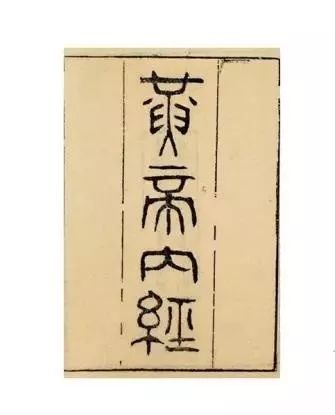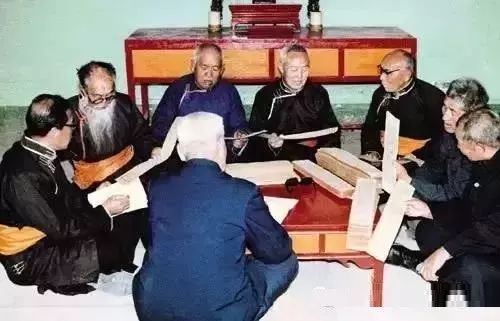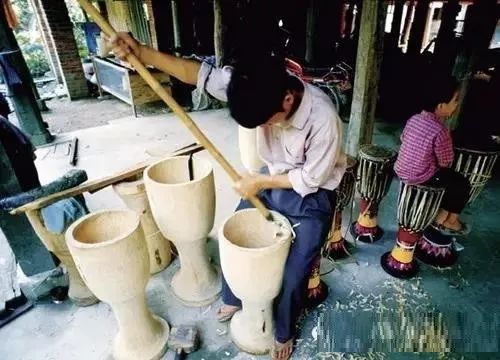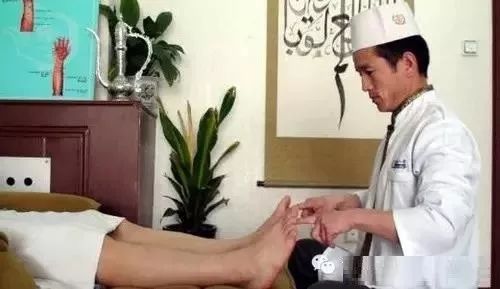In a broad sense, Traditional Chinese Medicine (TCM) refers to all ethnic and religious medical practices within China, primarily including Han traditional medicine, Uyghur traditional medicine, Tibetan traditional medicine, Mongolian traditional medicine, Dai traditional medicine, and Hui traditional medicine, characterized by compatibility and internationalization. Due to the large Han population, the early development of written language, and a long history and culture, the Han medical system is more complete, with richer clinical practices and a relatively clear development context, thus having the greatest influence. Around the time of the Opium War, “Western medicine” was introduced into China, and the part of traditional Chinese medicine based on Han medicine began to be referred to as “Chinese medicine” to distinguish it from “Western medicine,” which is modern medicine today.
1. Han Medicine

Han medicine established a unique theoretical system during the Spring and Autumn and Warring States periods, using classical Chinese philosophical concepts such as Yin-Yang and the Five Elements as its theoretical foundation, while absorbing the essence of other ethnic traditional medicines. In modern times, it has incorporated the strengths of modern medicine through a “combination of Chinese and Western medicine” approach. It is based on the physiology and pathology of the organs and meridians, with relatively weak anatomical concepts, represented by figures such as Hua Tuo, Bian Que, and Zhang Zhongjing. Key texts include the “Huangdi Neijing” (Yellow Emperor’s Inner Canon), “Shennong Bencao Jing” (Shennong’s Classic of Materia Medica), and “Bencao Gangmu” (Compendium of Materia Medica), emphasizing the balance of Yin and Yang, focusing on a holistic view, and employing the principle of differentiation of syndromes for treatment. The four diagnostic methods of observation, listening, inquiry, and palpation are combined to establish the eight major treatment methods: sweating, vomiting, purging, harmonizing, clearing, warming, tonifying, and reducing, based on the principles of monarch, minister, assistant, and envoy in prescription. Today, Han medicine, as the main component of TCM, is gradually having a global impact.
TCM uses Yin-Yang and the Five Elements as its theoretical foundation, viewing the human body as a unity of Qi, form, and spirit. Through the four diagnostic methods of observation, listening, inquiry, and palpation, it seeks to explore the causes, nature, and location of diseases, analyze pathogenesis, and assess changes in the five internal organs, meridians, Qi, blood, and body fluids, determining the balance of pathogenic and healthy factors, thus arriving at a diagnosis and summarizing syndromes. Based on the principle of differentiation of syndromes for treatment, it formulates treatment methods such as sweating, vomiting, purging, harmonizing, warming, clearing, tonifying, and reducing, using various therapeutic modalities including herbal medicine, acupuncture, trauma treatment, tui na (Chinese therapeutic massage), cupping, qigong, and dietary therapy, to achieve a state of balance between Yin and Yang for recovery.
The positive aspect of TCM treatment is the hope of assisting in restoring the balance of Yin and Yang in the body, while the negative aspect is the hope that when medication is necessary to slow the deterioration of disease, it can also consider the quality of life. Furthermore, the ultimate goal of TCM is not only to treat diseases but also to help humanity reach the state of the four exemplary figures proposed in the “Huangdi Neijing”: the True Person, the Perfect Person, the Sage, and the Worthy Person.

The term “Han medicine” originates from Japan and was also used during the Qing Dynasty. It is also known as Han medical science or Hanfang medicine, representing the traditional medical thoughts and treatment techniques developed in China. Since it is a medical tradition developed by the Han ethnic group, it is referred to as Han medicine.
With the development of Han culture, it spread to Korea, Vietnam, Japan, and other regions, integrating with local medical practices to form various different schools.
The earliest use of the term “Han medicine” was in Japan during the Edo period, where it was used to distinguish their native medicine—”Wang medicine”—and Western medicine—”Lan medicine.” During the Qing Dynasty, this term was also used to refer to traditional Chinese medicine.
Before 1949, the term Han medicine was quite common. After the Qing Dynasty and into the Republic of China, it was also referred to as national medicine. In China, “Zhongyi” (meaning “Chinese medicine”) is more commonly used than “Han medicine.” However, in Japan and Korea, the more neutral term is still in use.
Japanese Hanfang medicine, Korean Han medicine, Korean Goryeo medicine, and Vietnamese Dong medicine are all based on TCM, but they mostly change the soup without changing the medicine, and can also be seen as part of TCM.
Modern China often refers to it as Zhongyi, which is the traditional medical thought and medical technology developed in China. Since it was initially a medical tradition developed by the Han ethnic group, it is called Han medicine, but it has also been influenced by many other ethnic medical practices.
With the development of Han culture, it spread to Korea, Vietnam, Japan, and other regions, integrating with local medical practices to form various different schools. Chinese Zhongyi, Japanese Hanfang medicine, Korean Han medicine, Korean Goryeo medicine, and Vietnamese Dong medicine are all developed based on it.
In Korea and Vietnam, traditional Chinese medicine is referred to as Dongyi, while modern medicine introduced from Europe is referred to as Xiyi. However, during the Qing Dynasty, influenced by China, they also referred to traditional Chinese medicine as Han medicine.
Until the early Republic of China, when modern medicine entered China, supporters of modern medicine viewed it as new medicine and traditional Chinese medicine as old medicine.
Due to the influence of nationalism, supporters of traditional Chinese medicine regarded it as national medicine or Zhongyi (meaning “Chinese medicine”), believing that modern medicine is Western medicine. This led to disputes, but the name of TCM was thus established, and in China, it is rarely referred to as Han medicine.
However, in Japan, Korea, and Vietnam, they still use this term.
In 1986, Korea revised its medical law, renaming Korean Han medicine to Han medicine, but the term Han medicine is still commonly used in the community.
2. Uyghur Traditional Medicine

Uyghur traditional medicine was established around the 4th century BC, based on ancient Greek philosophical theories of temperament and humoral theory, with the four elements theory as its core. It also absorbed the essence of Arabic medicine, ancient Indian medicine, and Han medicine, having a deep understanding of human anatomy. Key figures include Badereddin Supi Ahn, Hazrat Bayi, and Kumarajiva, with representative works such as “Yanfang Suoyao,” “Hazrat Bayi’s Medical Book,” and “Medical Canon.” In addition to emphasizing the four diagnostic methods, it also establishes separate diagnostic methods for urine examination, stool observation, and phlegm diagnosis within the scope of observation. Uyghur medicine has significant influence in Central Asia, West Asia, Russia, and the Middle East, with increasingly active exchanges among them.
3. Tibetan Traditional Medicine

Tibetan traditional medicine has a development history of about 2500 years, also based on Yin-Yang and the Four Humors theory, while absorbing traditional medical knowledge from ancient India, Nepal, Persia, and the Han ethnic group. Influenced by the local custom of sky burial, classical anatomy is particularly developed. Key figures include Yutuo Yundeng Gongbu, Biqilie Gong, and Wubaqiusang, with representative works such as “Jusi” (the Four Medical Classics). Tibetan medicine emphasizes the five internal organs, believing that the human body is centered around the five internal organs, composed of three major factors (“Long”—Qi, “Chiba”—fire, “Peigen”—water and earth), seven types of substances (refined food or chyle, blood, flesh, fat, bone, marrow, essence), three types of excreta (sweat, urine, and feces), 360 bones, nine major orifices, and black and white meridians. In addition to the four diagnostic methods, like Uyghur medicine, it also pays special attention to urine diagnosis, formulating prescriptions based on the properties and functions of drugs and their tastes after digestion, emphasizing modulation and enhancement of effects, and appropriate combinations. Tibetan medicine, besides being significantly influenced by traditional medicine from India and Nepal, has also gained some global influence.
4. Mongolian Traditional Medicine

Mongolian traditional medicine has a history of about 2700 years, based on Yin-Yang, the Five Elements, and the Five Humors theory, deeply influenced by Han medicine, Tibetan medicine, Hui medicine, and European traditional medicine during its formation. Like Tibetan and Uyghur medicine, Mongolian medicine also has a profound understanding of human anatomy. Key figures include Lobsang Danjin Zhalasang, Yishibala Zhuer, and Longrigedan Dar, with representative works such as “Four Parts of Sweet Dew,” “Mongolian Medicine Canon,” and “Fang Hai.” In addition to commonly used inquiry, observation, and palpation diagnostics, it also emphasizes pressing, listening, and smelling diagnostic methods, while paying attention to urine examination and the differentiation of cold and heat in diseases. Mongolian medicine has a profound influence on the traditional medicine of Mongolia and other regions predominantly inhabited by Mongolian ethnic groups.
5. Dai Traditional Medicine

Dai traditional medicine also has a history of over 2500 years. After the Middle Ages, it was centered around ancient materialism and the philosophy of Southern Theravada Buddhism, deeply influenced by Dai culture and other ethnic traditional medicines. Key figures include Waqijia Bie and Guma La Bie, with representative works such as “Luo Ge Ya Tan” and “Ba La Ma Ta Tan.” It has a thorough understanding of human anatomical structure, emphasizing the differentiation of the four elements (wind, fire, water, earth) and the five aggregates (form, perception, sensation, mental formations, consciousness), with prescriptions categorized into single herbs, small formulas, and large formulas. Dai medicine maintains connections with the traditional medicine of Thailand and other Southeast Asian countries to this day.
6. Hui Traditional Medicine

Hui traditional medicine was established in the 13th century, guided by the idea of the unity of heaven and humanity and the organic whole, based on the theories of vital energy and Yin-Yang and the Seven Elements. It absorbed and inherited ancient Greek and Roman medicine, and after being transformed by Islamic culture, it formed a national traditional medicine with characteristics of Arabic Islamic medicine, while also incorporating the essence of Han medicine, thus forming the earliest traditional medicine of “combining Chinese and Western medicine.” Its anatomical knowledge is relatively weak, represented by figures such as Aisha, Li Xun, Shatu Musu Sa Qianzai, Chen Yuan, and Ma Shikui, with representative works such as “Huihui Medicinal Formulas” and “Haiyao Bencao.” It focuses on differentiation of quality, combined with differentiation of syndrome, disease, and meridian, emphasizing the principle of differentiation of syndromes for treatment, with flexible and rich treatment methods. Hui medicine in China still frequently interacts with the traditional medicine of many countries where Islam is the predominant faith.

